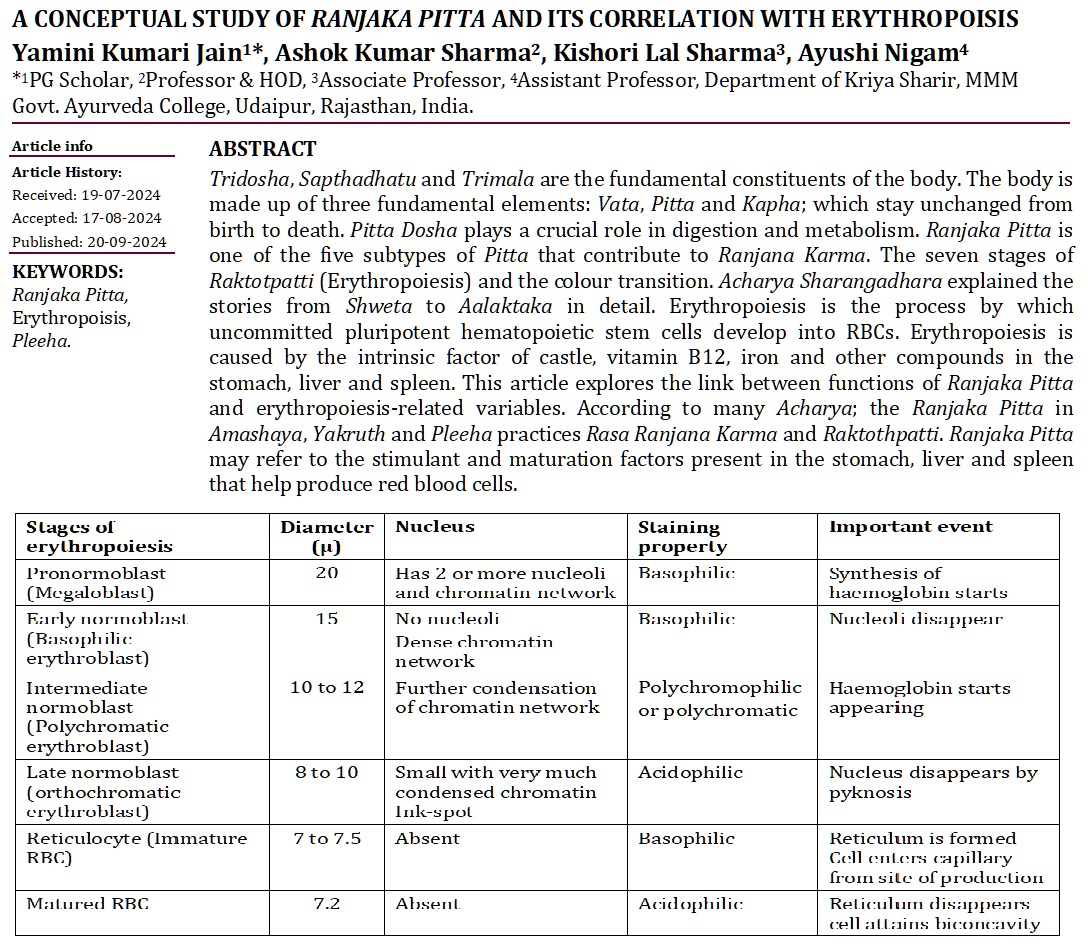A Conceptual Study of Ranjaka Pitta and its Correlation with Erythropoisis
DOI:
https://doi.org/10.47070/ayushdhara.v11i4.1588Keywords:
Ranjaka Pitta, Erythropoisis, PleehaAbstract
Tridosha, Sapthadhatu and Trimala are the fundamental constituents of the body. The body is made up of three fundamental elements: Vata, Pitta and Kapha; which stay unchanged from birth to death. Pitta Dosha plays a crucial role in digestion and metabolism. Ranjaka Pitta is one of the five subtypes of Pitta that contribute to Ranjana Karma. The seven stages of Raktotpatti (Erythropoiesis) and the colour transition. Acharya Sharangadhara explained the stories from Shweta to Aalaktaka in detail. Erythropoiesis is the process by which uncommitted pluripotent hematopoietic stem cells develop into RBCs. Erythropoiesis is caused by the intrinsic factor of castle, vitamin B12, iron and other compounds in the stomach, liver and spleen. This article explores the link between functions of Ranjaka Pitta and erythropoiesis-related variables. According to many Acharya; the Ranjaka Pitta in Amashaya, Yakruth and Pleeha practices Rasa Ranjana Karma and Raktothpatti. Ranjaka Pitta may refer to the stimulant and maturation factors present in the stomach, liver and spleen that help produce red blood cells.
Downloads

Downloads
Published
Issue
Section
License
Copyright (c) 2024 AYUSHDHARA

This work is licensed under a Creative Commons Attribution-NonCommercial-ShareAlike 4.0 International License.


